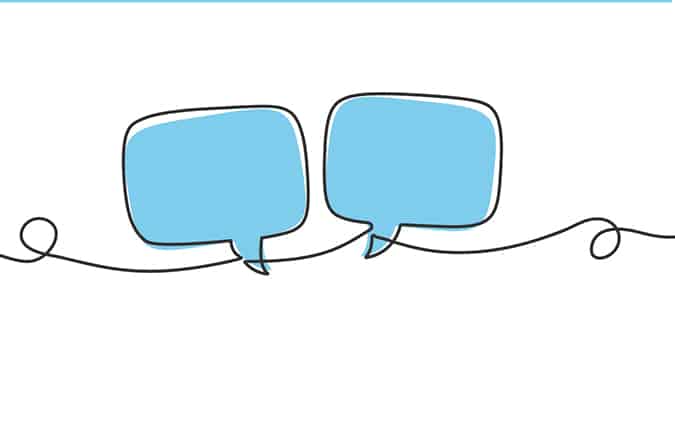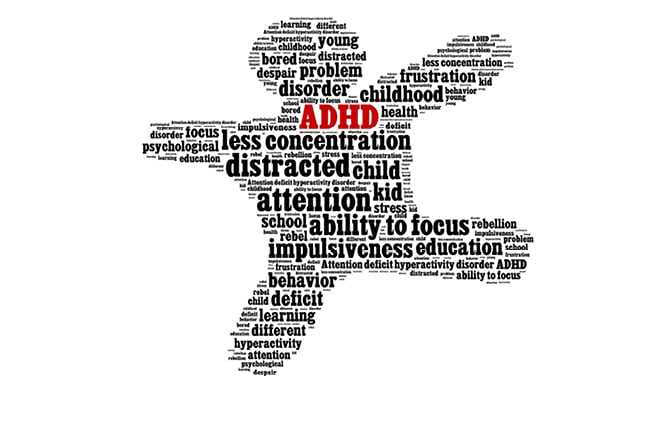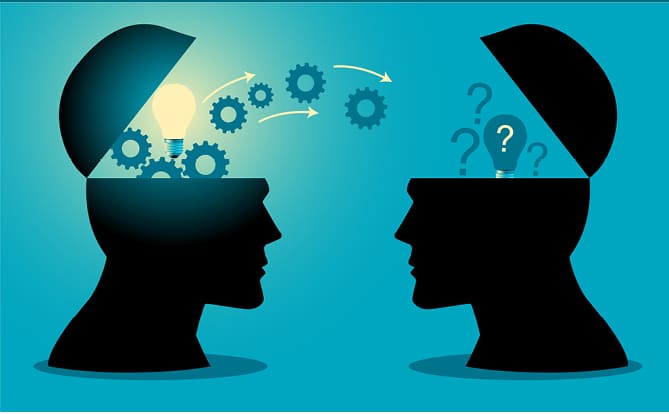by Malka Ungar, PhD
The Universal Design for Learning Center (2014) identified three neurological networks involved in learning. These are the recognition network, the strategic network, and the affective network. Recognition refers to the “what” of learning. What skill will the students be able to do independently by the end of a lesson or unit? The strategic network is the “how”. What strategy will students use to accomplish the learning task? Finally, the affective network is the “why”. When planning lessons, a teacher needs to consider how they will communicate “what” skill students will be learning, and they need to teach a strategy to show students “how” to access the skill. Learners also need to know why the learning goal is important and relevant, or they will remain disengaged and unmotivated. If the affective network is not activated, no real learning will occur (Voke, 2002).
The Root of the Issue
When students are disengaged, they will not develop the cognitive skills needed for authentic learning (Voke, 2002). This is especially true of students who cannot focus. For a child with ADHD, delving into a blatt of Gemara can seem like an insurmountable task. The struggle is very real. Students are expected to translate the text on a literal level and then synthesize the details into a logical whole.
Motivational factors account for 25% of success in reading comprehension (Athey, 1969). While intellectual factors, such as background knowledge, vocabulary, and semantics, play a large part in reading, affective factors are significant impactors, as well. It is attitude and emotions that inspire a reader to engage with a text (Athey, 1969). When a child feels confident in his reading abilities, he develops a sense of self-confidence and identifies as a strong reader (Athey, 1969). Unfortunately, the opposite is true, as well. By the time a student enters middle school and is expected to immerse himself in Gemara classes, he has already formed an identity of reader or non-reader. Therefore, it is imperative that teachers use pedagogy that inspire a sense of mastery and deep engagement (Athey, 1969).
Many adolescents struggle with the complicated and challenging task of comprehension. They may not be fluent in the language of the Gemara and are unable to follow the basic logic of the blatt. Therefore, they need to be immersed in engaging opportunities which will increase the likelihood of learning and the rate of achievement, as they become problem solvers and problem generators (Voke, 2002).
Facing the Challenge: Relinquishing Control
Rebbeim are faced with a huge challenge. How can they design Gemara classes which challenge, engage, and motivate their disengaged and unfocused learners? The good news is that there is no need to reinvent the wheel. Chavrusa-style learning has been proven to be one of the most effective methods of inspiring deep comprehension.
Dialogic discussion, or learning b’chavrusa, is a method of literacy instruction that uses discussion and dialogue to motivate students to use multiple strategies to engage with a text via interactive and sometimes competitive discussions (Wilkinson & Son, 2011). Conversations are built upon open-ended, collaborative exchanges.
The goal is to build students’ comprehension and integration of texts (Wilkinson & Son, 2011), and the result is an increase in intrinsic motivation as students engage in social collaboration around a text. Dialogic discussions engage readers with opportunities to use multiple comprehension strategies and construct knowledge fluently and reflexively as they interact with a motivating text and engage in social interactions with peers (Guthrie et al., 2012).
Learning and literacy are framed by social interactions and cultural experiences and expectations (Vygotsky, 1978). Mirror neurons in the brain mimic what we observe. As teachers provide direct instructions, students’ mirror cognitive and metacognitive actions. Knowledge is then refined and processed during teacher-led and peer-led dialogic discussions (Fisher & Frey, 2020).
When a rebbe is faced with a number of students with ADHD, it seems counter-intuitive to take a step back and give students space to learn b’chavrusah. However, when a teacher can find the courage to relinquish the center of control during discussions to his students, amazing things happen.
The social nature of learning b’chavrusah intrinsically engages learners and deepens comprehension (Allen et al., 2003). Dialogic discussion strengthens reader-text relationships, positively impacts classroom climates, and promotes a more supportive learning environment for English Language Learners (Fisher & Frey, 2018). The rebbe is always the dominant voice in the classroom, guiding his students’ thoughts. However, an effective instructor plans when to take a step back to allow his learners to engage in collaborative meaning-making conversations.
What Can it Look Like in the Gemara Classroom?
Rabbi Mandel, seventh grade Gemara rebbe at Torah Day School of Phoenix, met with me to describe his experiences facilitating dialogic discussions or learning b’chavrusah. After years of passionately and dialogically studying Gemara, Rabbi Mandel is determined to teach every one of his students, even those who struggle, how to collaboratively delve deeply into the text. As he so eloquently said, “Without clarity, you have no joy. So, if you’re looking for joy, then you have to have clarity, and you’re not going to have that unless you have some kind of back and forth of a discussion in the learning.”
This is what a typical lesson looks like in Rabbi Mandel’s Gemara class:
- Laying the foundations: At the beginning of every Gemara shiur, Rabbi Mandel translates the text and fills in background information. He then lets the boys know exactly what to expect by laying out the structure of the lesson. He tells them to look out for questions, answers, proofs, and points for discussion.
- Whole class dialogic discussion: Before breaking into groups, Rabbi Mandel will reread the Gemara a couple of times and then facilitate a dialogic discussion with the full class. Some methods of facilitating whole-class dialogic discussions are:
- Collaborative Reasoning is an effective approach which is built on dialogic principles. Students make a claim, provide evidence from a text, and prepare counterarguments which undermine opposing viewpoints. Once one student builds an argument, others will adopt this stance to support their own arguments and viewpoints. Repetitive use of the claim, evidence, and counterargument pattern will solidify the argument schema for discussion participants (Anderson et al., 2001).
- Reading Apprenticeship is another research- based dialogic model. In this framework, teachers model their own thinking as they struggle to make sense of the Gemara. Students then engage in metacognitive conversations about content. This is an opportunity to promote active use of strategies in an engaging and authentic way (Greenleaf, Schoenbach, Cziko, & Mueller, 2001). This method was proven effective for struggling ninth graders in a large- scale, randomized control trial (Corrin, Somers, Kemple, Nelson, & Sepanik, 2008).
- Learning b’chavrusah: Pairs of students spend about ten minutes dialogically discussing, analyzing, and clarifying the Gemara. When students are engaged in competitive conversations, they were forced to use the text to clarify and solidify their own understanding (Nystrand, 2006).
Collaborative Strategic Reasoning (CSR) is a method where students engage in small group strategy discussions before, during, and after reading. Studies have shown that CSR was especially effective for low-achieving students (Rosenshine & Meister, 1994). The results showed that strategies grounded text-based conversations and gave students multiple opportunities for discussion. CSR classrooms provided students with more opportunities for collaborative discussion. The framework gave them the ability to explore ideas in ways that the typical classroom could not (Boardman, Boele, & Klingner, 2017).
Concluding Thoughts
While Rabbi Mandel has developed a clear structure for facilitating text-based discussions, the implementation process is often fraught with obstacles. Rabbi Mandel explained, “One of the biggest challenges, especially in middle school, is that its biggest strength is sometimes its biggest weakness, which is that you pull the teacher out of the equation.” While students “are more readily willing to listen and focus when it’s their peer, rather than when it’s their superior,” Rabbi Mandel reflected that “it leaves things open for a lot of messing around.”
He took a moment to consider his seventh-grade boys who “are not focused” and end up “interspersing the focusing on the material with the discussions about all kinds of other unrelated topics.” Those students may not be able to engage in text-based conversations, because they were unable to focus during the full-class explanation of the literal meaning of the Gemara. Therefore, dialogic time provides Rabbi Mandel with an opportunity to clarify the material for those who need more one-on-one instruction. He tremendously values those moments when he can spend the time clarifying the Gemara for students who would not otherwise have this opportunity. The back and forth between the rebbe and one or two talmidim gives the boys the opportunity to discuss and focus until they gain a real sense of clarity. As Rabbi Mandel put it, “their mind has to turn on in a way where they have to actually repeat the information in a way that makes sense.”
When a rebbe has the confidence to move from the “sage on the stage” to the “guide on the side,” the class comes alive with the age-old dialogic discussions of the Gemara. Try asking your students, as Rabbi Mandel regularly does, “OK, let’s hear what you guys have to say,” and watch previously disengaged, unfocused adolescents come to life and delve into the sugya on an entirely new level.
References
Anderson, R. C., Nguyen-Jahiel, K., McNurlen, B., Archodidou, A., Kim, S.-y., Reznitskaya, A. (2001). The snowball phenomenon: Spread of ways of talking and ways of thinking across groups of children. Cognition and Instruction, 19(1), 1-46.
Allen, J. B., Möller, K. J., & Stroup, D. (2003). “Is this some kind of soap opera?”: A tale of two readers across four literature discussion contexts. Reading & Writing Quarterly, 19(3), 225–251. https://doi.org/10.1080/10573560308215
Athey, I. (1969). Affective Factors in Reading. Kansas City, Missouri: Distributed by ERIC Clearinghouse.
Boardman, A.G., Boelé, A.L., & Klingner, J.K. (2017). Strategy Instruction Shifts Teacher and Student Interactions During Text-Based Discussions. Reading Research Quarterly. https://doi.org/10.1002/rrq.191
CAST (2014). Universal design for learning guidelines version 2.1. Wakefield, MA.
Corrin, W., Somers, M.-A., Kemple, J. J., Nelson, E., & Sepanik, S. (2008). The enhanced reading opportunities study: Findings from the second year of implementation (NCEE-2009-4036). Washington, DC: National Center for Education Evaluation and Regional Assistance, Institute of Education Sciences, U.S. Department of Education.
Fisher, D., & Frey, N. (2018). Raise Reading Volume Through Access, Choice, Discussion, and Book Talks. The Reading Teacher, 72(1), 89-97. doi:10.1002/trtr.1691
Fisher, D., & Frey, N. (2020). Comprehension: The Skill, Will, and Thrill of Reading. Thousand Oaks, CA: Sage Publications
Greenleaf, C., Schoenbach, R., Cziko, C., & Mueller, F. (2001). Apprenticing adolescent readers to academic literacy. Harvard Educational Review, 71 1), 79- 129.
Guthrie, J. T., Wigfield, A., Barbosa, P., Perencevich, K.C., Taboada, A., Davis, M. H., et al. (2004). Increasing reading comprehension and engagement through concept oriented reading instruction. Journal of Educational Psychology, 96(3), 403-423.
Nystrand, M. (2006). Research on the role of classroom discourse as it affects reading comprehension. Research in the Teaching of English, 25(4), 392-412.
Rosenshine, B., & Meister, C. (1994). Reciprocal teaching: A review of the research. Review of Educational Research, 64(4), 479-530.
Voke, H. (2002). Motivating Students to Learn. ASCD Info Brief, 28.
Vygotsky, L. S. (1978). Mind in society: The development of higher psychological processes. Cambridge, MA: Harvard University Press.
Wilkinson, A. G., & Son, E. H. (2011). A dialogic turn in research on learning and teaching to comprehend. Handbook of Reading Research, 4, (pp. 359- 387). New York, NY: Routledge.
Dr. Malka Ungar (dr.ungar6@gmail.com) is an educational coach with extensive experience in team building, organizational transition and transformation. She has developed curriculum and trained teachers in Torah Academy for Girls Junior High School, as well in her current role as Director of Education at Torah Day School of Phoenix. Dr. Ungar is training the next generation of educators in her work as an adjunct professor at the Masters level program at TTI-Daemen College. She received her BS in General and Special Education at Touro College and earned an MS in Teaching Literacy Birth through Grade 12 from Touro Graduate School of Education. She then earned her PhD. in Literacy Leadership at St. John’s Graduate School of Education. Dr. Ungar has attended multiple trainings at Teachers College Reading and Writing Project and has a Certificate in School Management and Leadership from Harvard’s Graduate School of Education.



